Fermenting oats into oatmeal (or if you are outside the US, porridge) is a delicious way to enjoy a healthy breakfast. This article will explain why you should be fermenting your oats, show you how to do it, and answer the most common fermenting oats questions I receive.
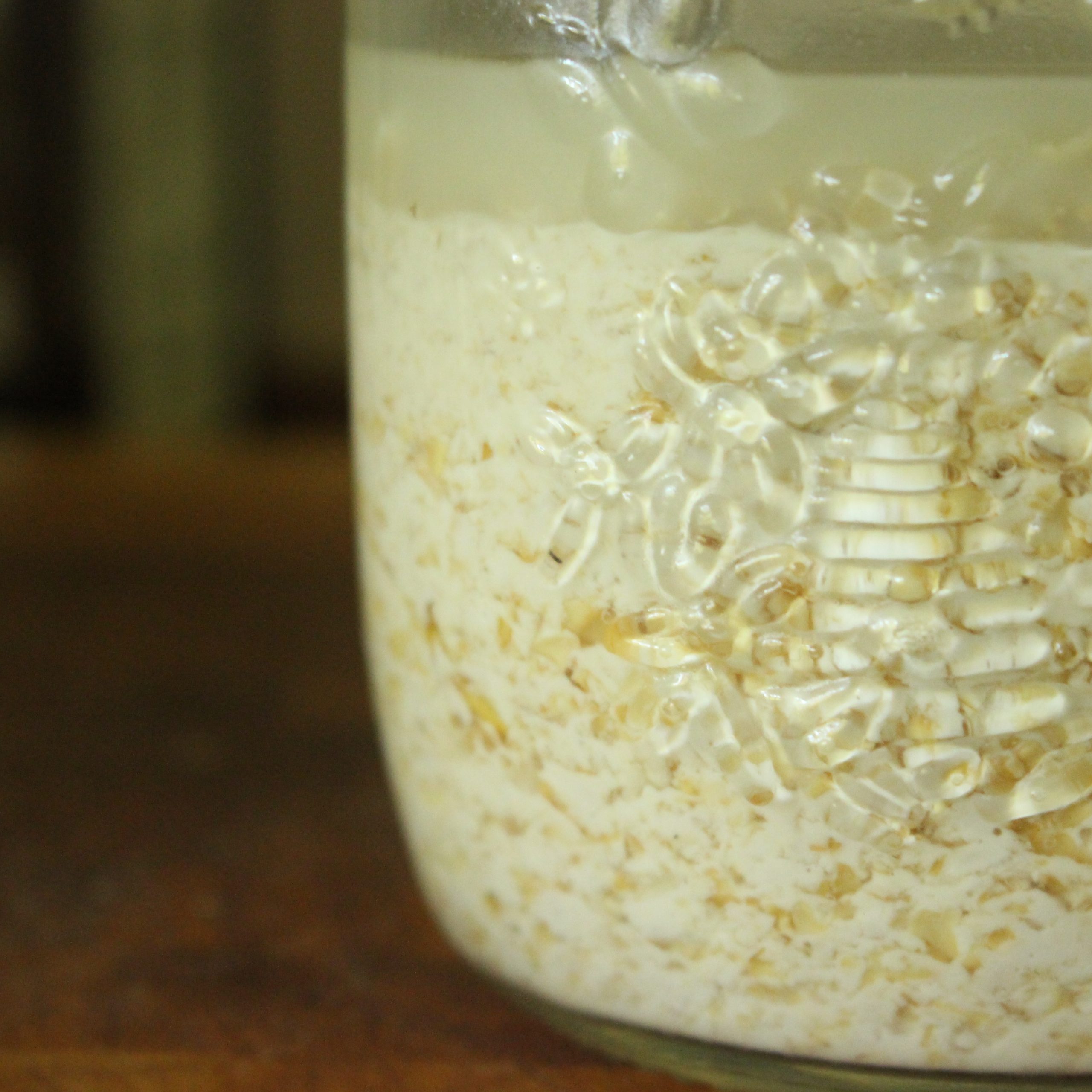
Why ferment oats?
If you are a lover of oatmeal, fermenting your oats before cooking them will take your breakfast to a new level. Here’s why you should do it:
1. Fermented oats taste delicious!
A bowl of oatmeal is already creamy and satisfying but when you ferment your oats with a live starter, they also take on a zingy flavour. Everyone who I have shared this process with has told me that, once they’ve tried their oats fermented, they can’t go back to normal oatmeal!
2. Fermenting oats makes them easier to digest.
Soaking oats softens them and the fermentation process breaks down their complex carbohydrates. This means your digestion does not have to work so hard – less bloating and more energy for your body to do other things.
3. Fermenting oats makes them more nutritious.
All grains contain anti-nutrients that can block the absorption of minerals – by fermenting your oats the right way (using the method below) you will neutralise those therefore making your oats more nutritious.
How to make fermented oats:
Making fermented oats is very simple. Here’s how:
1. Measure your rolled oats (I use around 50-60g per person) into a bowl and cover them with ample water (ideally unchlorinated; if you have no filter you can leave water out overnight and a lot of the chlorine will dissipate).
2. Add a tablespoon of ‘starter’ to the mixture. This can be anything that has live probiotics in it. Some examples are: sourdough starter, yoghurt, milk kefir, buttermilk, apple cider vinegar, sauerkraut juice or kombucha. It’s important that this starter is active. If you are buying it from the store, ensure that it hasn’t been pasteurised after production (the packaging should say ‘live bacteria’).
3. Stir this well then cover the bowl and leave it to stand at room temperature. The length of time you leave your oats to ferment depends on how tangy you would like your resulting oatmeal/porridge. The longer you leave it the more tart it will become. I usually leave my oats overnight (I mix them up before going to bed and then cook them up the following morning).
4. When you are ready to cook your oatmeal/porridge, pour the entire contents of the bowl into your saucepan, add more water/milk as necessary, cook and enjoy.
How to eat fermented oatmeal/porridge
Fermented oatmeal can be eaten in any way that we would eat normal oatmeal.
For many, that means topping with sweet things like fruit and honey in a combination with nuts/seeds.
I often eat my porridge savoury; I like to stir in miso just before serving and then add ground flaxseed and olive oil. Sometimes, for a protein-rich breakfast, a few minutes before they’re done I stir in a couple of eggs, topping the mix with cream. I also love the fermented oats served simply with butter and salt.
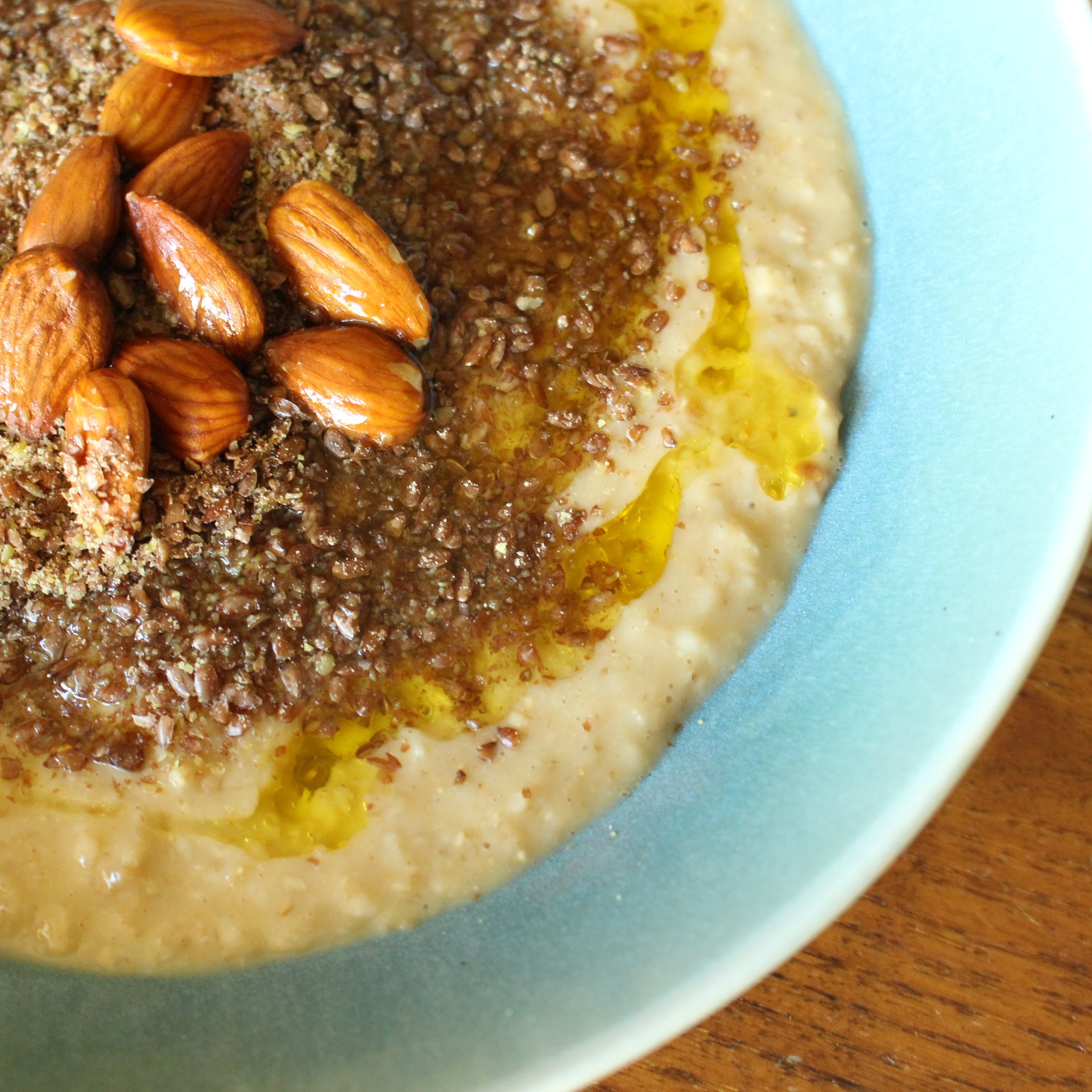
Ways of saving/storing fermented oats
Fermented oats can be kept – both before cooking and after they’ve been cooked.
To store your uncooked fermented oats:
You don’t need to cook your fermenting oats straightaway. If your plans change, or you have too many, put the bowl into the fridge. This will greaty slow down the fermentation. The oats can be stored this way for 4 to 5 days before cooking.
To store your cooked fermented oats:
If you don’t manage to eat all your cooked,fermented oatmeal, you can store it in the fridge. It can be reheated anytime over the following few days – add a little extra liquid when doing so. See the question section below for more ideas on how to use cooked fermented oats.
Fermented oats questions:
Can I ferment steel-cut oats?
Yes, you can use this same method to ferment steel-cut oats. Because they are thicker, they will need a longer cooking time.
How long should I ferment my oats?
This is up to you. I generally ferment my oats overnight, for 12 hours. This produces an oatmeal with a light, tangy flavour. If you want a less marked fermented flavour, ferment your oats for less time or put them in a cooler place. If you love the sour taste of fermented foods you can leave them longer – for 4 to 5 days. If you are leaving the fermentation longer than a day at room temperature, I would recommend stirring them once a day.

Can fermented oats go bad?
This has never happened to me – and I have fermented oats for as long as six or seven days. If you want to leave your oats at room temperature for longer than a day, do stir them every 24 hours.
If you have left the oats fermenting for many days and the smell is too strong for you, you can ‘dilute’ the flavour by adding more dry oats to the mix.
Can fermented oats be eaten raw?
Yes they can, but I prefer to cook mine. Historically, oats have been eaten cooked and heating fermented oats helps make them even more digestible.
Does fermenting oats reduce phytic acid?
Yes. Most oats, during the processing stage, lose their inherent phytase (the enzyme which can help deactivate phytic acid). We can create the conditions to aid the breakdown of phytic acid by fermenting our oats – an acidic environment plus live yeasts and bacteria (the live starter provides both of these). Using warm water, and/or keeping our fermenting oats warm, aids this process as does including a freshly-ground, high-phytase flour (like rye or buckwheat) in the mixture. See my article The Lowdown on Oats and Phytic Acid for more information.
Should I rinse my fermented oats before cooking them?
There is no need to rinse your fermented oats before cooking them. A lot of the goodness of the grain leaches into the water and it’s good to capture that in your final dish.
Doesn’t cooking destroy all the probiotics in my oats?
Cooking fermented produce does kill live probiotics, yes. But the work that those enzymes have carried out on your fermented oats will have brought about many changes in the food which are beneficial – making it easier to digest and more nutritious. In addition scientists are currently researching the benefits of postbiotics and para-probiotics, the microbes that are left behind when fermented foods are cooked, all of which do incredible things for our immune systems. Cultures have traditionally used fermented foods both raw and cooked and a diet utilising fermented foods in many, varied ways is most advised.
Can I ferment my oats in just water?
It is possible to ferment oats using water alone. The grains will have native yeasts and bacteria on them and so will your home environment. I recommend, however, using a live starter – giving your preparation a kick-start of already strong live bacteria makes the process a lot easier and much more likely to succeed. There is however an ancestral legacy of fermenting oats just in water, the Scottish made an oat ferment called Sowans. If you like to have a go, you can find my video course on it here.

Is it safe to ferment oats?
Fermentation is a very safe process. Cheese, chocolate, beer, wine, salami – they are all fermented food that have been made for thousands of years. And when you ferment in clean vessels with an already-strong starter, you are standing in the shoes of generations before you, worldwide, who’ve done just the same.
What if my house is too cold?
Oats will ferment in a cooler environment, they will just take longer. If your home is cool expect the process to take a day or more. If you’d like to speed it up, look for a warm spot – on a shelf above a radiator, on top of your fridge or in an airing cupboard. You can also utilise a ‘proofing’ area; read my article How to Create a DIY Proofing Box for more details.
Can I keep these oats?
Yes you can! If you are not ready to cook them, you can keep them in the fridge for 4 to 5 days. If you’ve already cooked them and have too many you can store them for later reheating (add a little extra liquid to the pan) in the fridge.
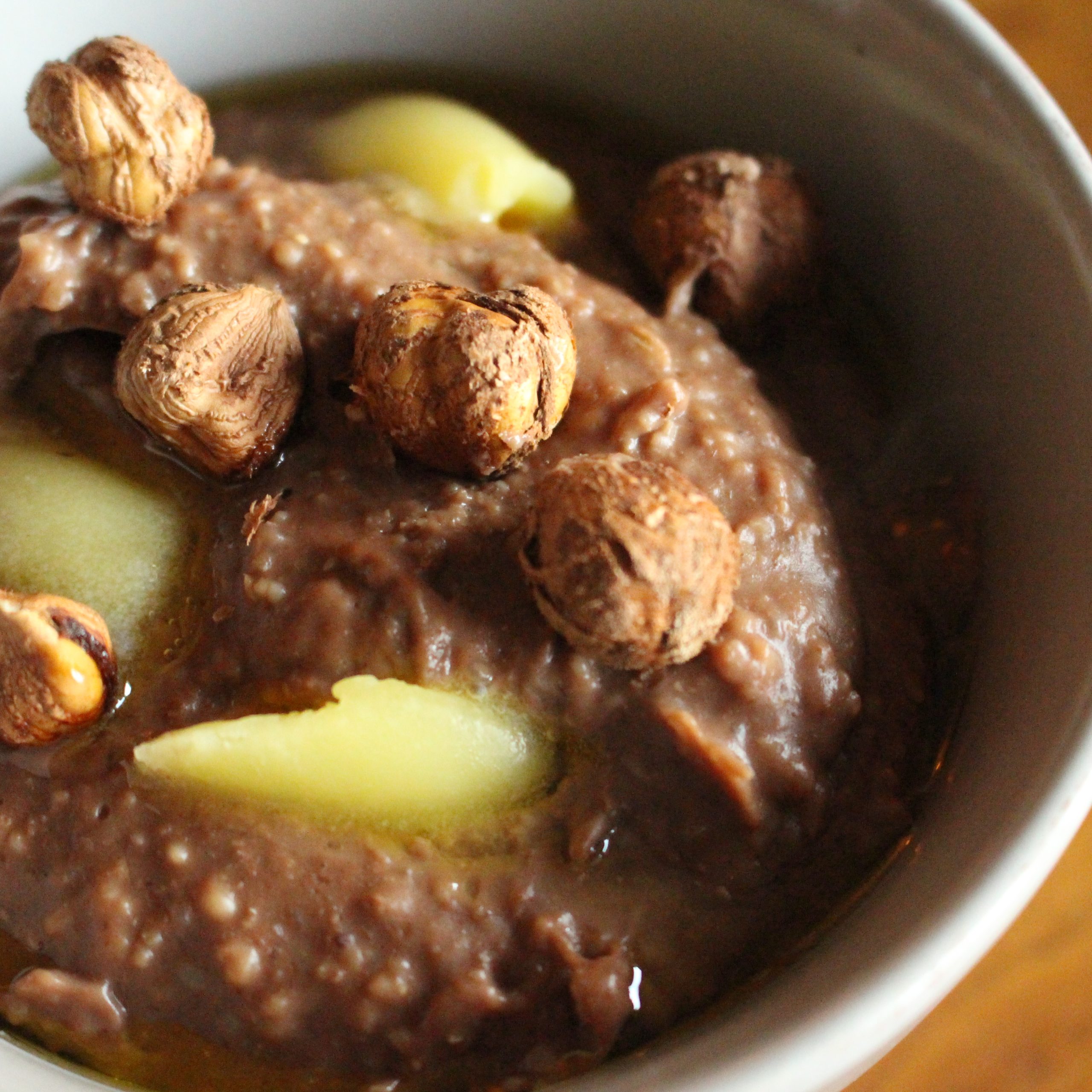
Is fermented oatmeal good for you?
Yes! Soaking and fermenting these oats makes them easier to digest and much more nutritious. They are especially nutrient dense if you add in a traditional fat – butter, cream or olive oil when you serve them.
I’ve got left over fermented oats, what can I do with them?
- You can eat them the next day for breakfast. Reheat them with a little extra liquid before serving.
- If you make bread, add in some leftover cooked fermented oats into your dough to bring more softness to the resulting bread’s crumb.
- You can use them as a non-dairy soup thickener.
- You can mix them with any type of flour and shape them into patties before frying.
I love fermented oats! What else can I make with them?
Fermented oats can be used for so many other things. Check out my recipe for fermented oat bake here – I’ve created a savoury version, but you could do the same with dried fruit and spices making it sweet.
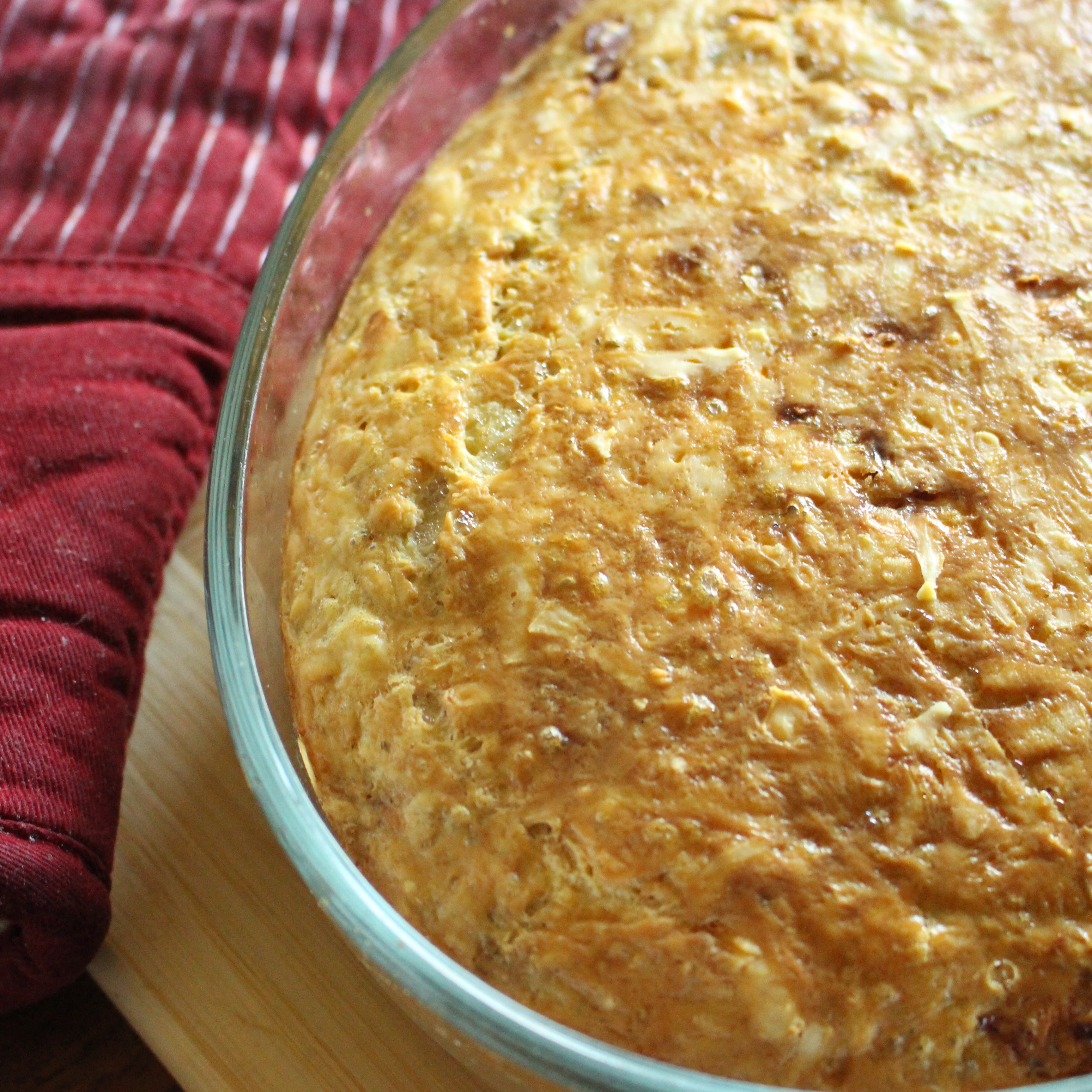
You may also like these articles:
The Lowdown on Oats and Phytic Acid
How to Roll Oats at Home (& 3 Good Reasons to Do It!)
Naturally-Fermented Staffordshire Oatcakes Recipe
I also have a free Zoom training that talks about many different ways of fermenting oats and how you can use them in your kitchen. Watch Fermenting Oats here. 
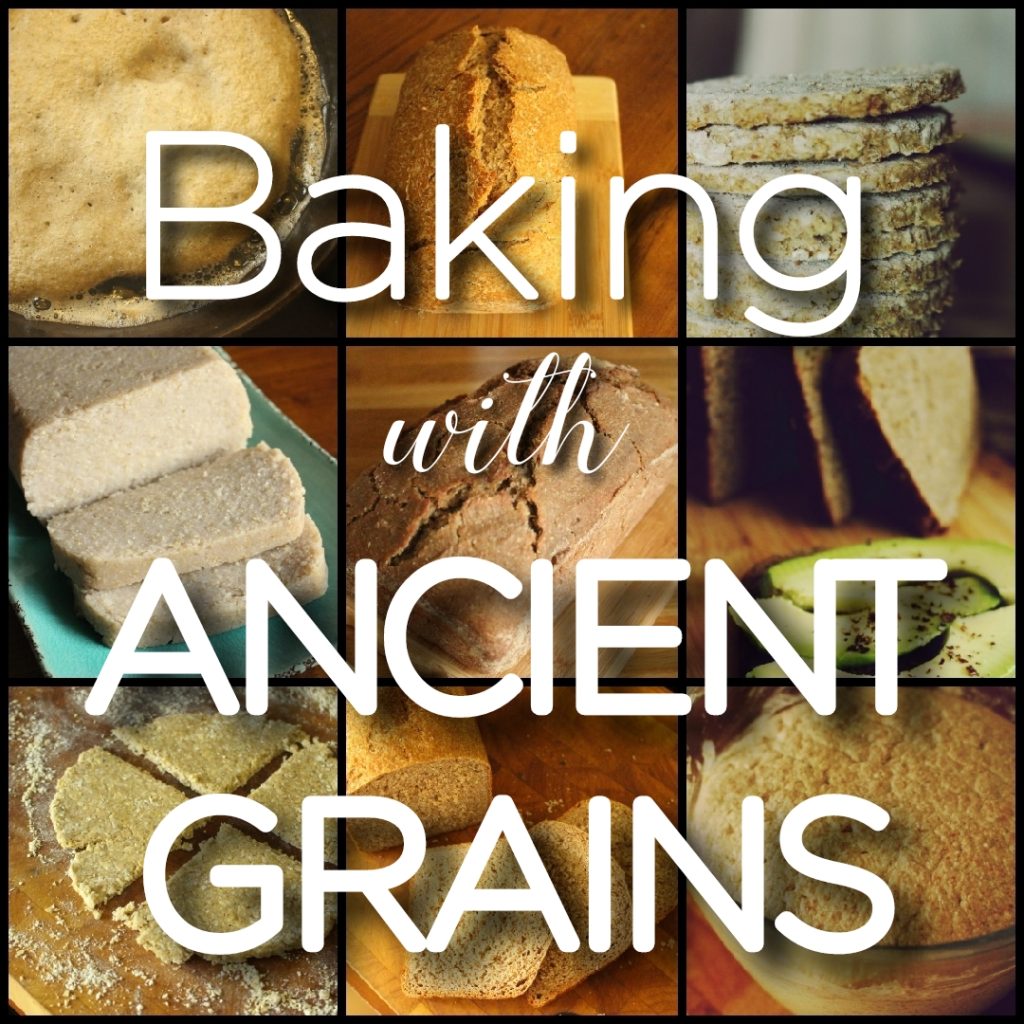
Bring ancient grain baking into your kitchen!
Download my free 30-page guide with five healthy and tasty 100% ancient grains recipes.



Doesn’t the cooking process kill the yeast? If so, how does fermenting with yeast rather than just soaking overnight increse the nutritional value of the final product?
Thank you in advance for your time and help.
Frankie
Hi Frankie,
As I said in the FAQs, cooking fermented produce does kill live probiotics, yes. But the work that those enzymes have carried out on your fermented oats will have brought about many changes in the food which are beneficial (which water alone will not) – making it easier to digest and more nutritious. In addition scientists are currently researching the benefits of postbiotics and para-probiotics, the microbes that are left behind when fermented foods are cooked, all of which do incredible things for our immune systems.
Thanks, Alison
I absolutely love oat groats but as someone who has IBD, the groats cause me a lot of bloating. Can I fermented oat groats prior to cooking? And can brown rice also be fermented? I am a new follower. The YouTube algorithm added your video into my feed and I am glad they did. I also started listening to your podcast. I have always cooked from scratch, and follow a Whole Food diet, and I also try to buy my food as locally sourced as I possibly can.
Hi Nora!
Glad you found me 🙂
You can ferment whole oat groats prior to cooking, but I don’t think it’s as effective as fermenting previously rolled or ground oats from a phytic acid removing point of view, as the phytase can’t so easily get to the compounds inside a whole, unground groat. I haven’t been able to find any studies on this though, so I’m not 100% sure. It would, though, provide a fermented flavour plus some microbial goodies on the outside of the groat.
Yes, brown rice can be fermented. Put it in a bowl with ample warm water and a starter. If you leave it more than a day you might need to change the water – it can become a bit smelly.
I bought steel cut oats to ferment, and threw it all together. I saw the dust from the oats float to the top, and I panicked and dumped everything into a strainer and rinsed it thoroughly, and reassembled it. Should I have done this? Did I mitigate the effects of my sourdough starter by rinsing everything in tap water? I added fresh sourdough starter. Also, I added some rye flour to it, but it is not freshly ground. I purchased my flour from my cooperative and it has a quick turnover.
Also, thank you for your response about the oat groats! 🙌🏻
If you’re worried about dust, you could rinse the steel cut oats at the very beginning of the process before you mix in any of the additions. It’s not ideal to rinse after the ferment because, as you said, you’re washing away the sourdough starter. The sourdough starter would have done good work in the ferment but still it’s a shame to wash it away afterwards – it will have things in it that are beneficial when cooked up.
Unless the rye flour is freshly-ground I don’t think it has any impact on phytic acid reduction. The phytase in the flour, which is what does the work, starts degrading as soon as it is exposed oxygen, so if the flour has been in a packet, even if only for a little while, there’s probably not much phytase left in it.
Thank you for educating me. I appreciate your help very much!
hey… i live in India and im a fermentation enthusiast…. the climate here is very different from your region…. we are also not used to maintaining a starter…. can i just keep my grains in water are wait for the fermentation to happen?
the temp here lies btw 18 °C at nighy to 30°C during the days….
Yes you can do this but there are a couple of downsides compared to my method:
1/ Without a stater, you leave the ferment more susceptible to unwanted bacteria in the environment/on the jars. A starter helps so much to control the process. Could you use yogurt or another live ferment?
2/ A plain water ferment won’t do anything to reduce phytic acid, so If you are concerned about phytic acid, you should use the starter/freshly-ground flour combination.
Having said the above, I do ferment oats in water when I make Sowans, the Scottish oat ferment (I have a course on it), but my temperature here in the UK is much lower than yours.
i have also seen certain videos on Dr khadar Vali(he’s named the Millet man of India)where he emphasis not to add yogurt while u r fermenting millets cauz the lactic acid bacterias would overpower the other useful bacterias n won’t let them grow…. so i thought that this could imply here as well… please correct me if im wrong…. im totally a newbie without any strong basics in this field
I add a starter to get the ferment going more quickly and to avoid opportunistic bacteria (that we might not want in our ferment) getting a hold. You can try without (and I do sometime), but it’s less likely to work.
can i ferment the grains along with nuts? like hazelnuts, almonds etc and cook them together?
I have not tried this but I don’t see why not.
ok…. well thanks for the reply😊
https://pmc.ncbi.nlm.nih.gov/articles/PMC10459665/
Above link to PubMed “Fermented Oats as a Novel Functional Food” that you and your readers might appreciate.
I ran across your video on fermented oats. Thank you for that information. I was working with some soughdough starter for bread. Last evening I mixed up some in with my steel cut groats. I could both see and hear (with my ear to the measuring cup I had them in) the activity. I am eating them raw now. They are pleasantly tangy and soft to chew. Thanks for introducing me to these.
Thanks for the study. Glad you enjoyed the fermented oats!
Hi Alison, I love my oats, porridge is my main source. The main reason I eat oats is they help with cholesterol levels, does fermentation cut down or even cut out the good work they do on cholesterol?
Thank you in advance.
Hi Deirdre,
This is a great question. The cholesterol effects of oats come from beta-glucan which (coincidentally) is fermented inside our guts to give the benefits. I cannot find any studies on whether humans benefitted more/less when the oats are fermented, but I did find this study which (in section 4.3) shows that in laboratory some studies report no change in beta-glucan, others, with specific strains/environment a decrease in beta-glucan. https://www.mdpi.com/2072-6643/15/16/3521#:~:text=Fermented%20oat%20drinks%20containing%204,from%205.65%25%20to%205.68%25.
I think the best way to mitigate this potential would be to ferment some of your oats (because the health benefits from doing so are numerable) but have some of the unfermented. That’s what I do. You could try my oatcake recipe for unfermented oats. <https://ancestralkitchen.com/2023/01/19/traditional-scottish-oatcakes/>
ok…. well thanks for the reply😊
okay👍 thank you so much for educating me. its very kind of you😊
Chlorinated tap water will severly inhibit fermentation.
Yes Rod. I say that everywhere else I mention fermentation but forgot here. I have amended the post, thank you.
can I ferment rolled oats, dry them, and them use in cookies, or meatloaf, or grind into flour for oat cakes or other baked goods ? I like overnight oats, but gag on cooked oat cereal. Can’t stand the gummy texture.
Yes, Joan, you could do this!
Hi Alison, I am wondering if I can use milk instead of water? I have just started the fermentation journey, kefir, mustard, salsa etc and am having fun trying new foods and enjoying the health benefits. Warmest regards, Glenda Dionne
Hi Glenda, I have never tried using just milk. If you used it (with a starter, like milk kefir or sourdough discard) as the soak liquid, it’d probably mean the milk plus the oats would ferment overnight and the resulting porridge might be too strong. Perhaps a better way would be to use minimal water with the starter when you ferment overnight and then, when you cook, add the milk.
Hi!!! Thank you for the info, it’s gold. But I need some help:
1. If I use a glass jar I just need to cover it with a cotton fabric or a napkin?
2. If I use for the fermentation just water and apple cider vinegar, how long takes the fermentation time and have to wait for eat it? I’d like to eat it as soon as possible.
3. How do I know if the process or result went bad and it’s not safe to eat it?
Thank you and my best regards
Hi Ad,
1/ Yes a cotton cover is fine. I use cotton or gauze.
2/ Fermentation is a sliding scale. The time depends on how much cider vinegar you use and what your ambient temperature is and you can adapt you recipe to suit those variables. And there’s no ‘perfect’ end goal – the result is, to some extent, a matter of taste. It will be more sour the longer you leave it, less the shorter. It’s up to you what you choose. If you want to eat it quickly, use a good quantity of vinegar and keep it warm.
3/ If there’s a problem with the ferment you will see and smell it. It will show mould on the top and will smell foul (not slightly vinegary/sweet as it should). I have never had a batch go bad. The starter is introducing so many good bacteria that they outcompete any bad.
Thank you Alison!!! Best regards from Colombia